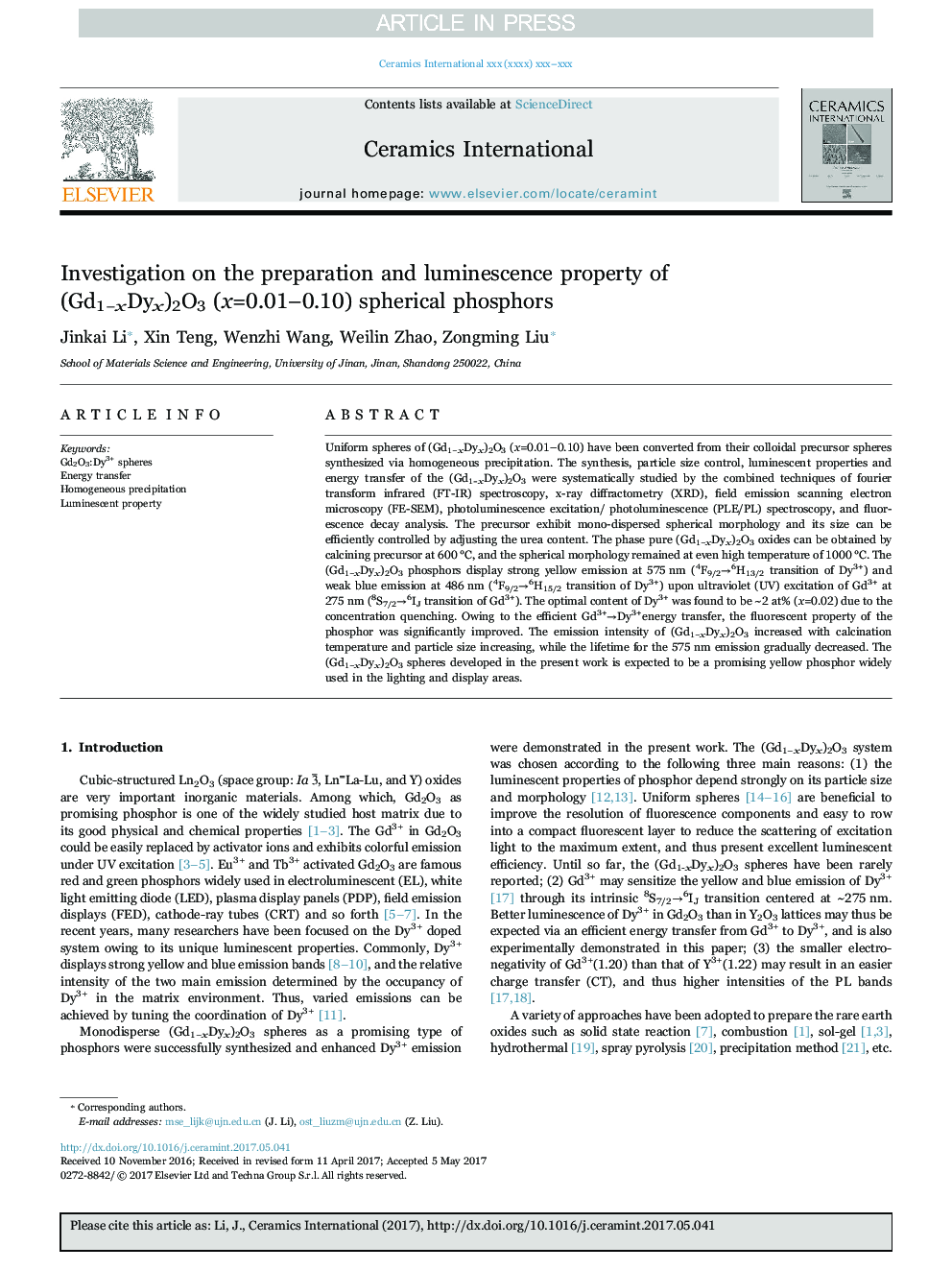| Article ID | Journal | Published Year | Pages | File Type |
|---|---|---|---|---|
| 5437682 | Ceramics International | 2017 | 8 Pages |
Abstract
Uniform spheres of (Gd1âxDyx)2O3 (x=0.01-0.10) have been converted from their colloidal precursor spheres synthesized via homogeneous precipitation. The synthesis, particle size control, luminescent properties and energy transfer of the (Gd1-xDyx)2O3 were systematically studied by the combined techniques of fourier transform infrared (FT-IR) spectroscopy, x-ray diffractometry (XRD), field emission scanning electron microscopy (FE-SEM), photoluminescence excitation/ photoluminescence (PLE/PL) spectroscopy, and fluorescence decay analysis. The precursor exhibit mono-dispersed spherical morphology and its size can be efficiently controlled by adjusting the urea content. The phase pure (Gd1âxDyx)2O3 oxides can be obtained by calcining precursor at 600 °C, and the spherical morphology remained at even high temperature of 1000 °C. The (Gd1âxDyx)2O3 phosphors display strong yellow emission at 575 nm (4F9/2â6H13/2 transition of Dy3+) and weak blue emission at 486 nm (4F9/2â6H15/2 transition of Dy3+) upon ultraviolet (UV) excitation of Gd3+ at 275 nm (8S7/2â6IJ transition of Gd3+). The optimal content of Dy3+ was found to be ~2 at% (x=0.02) due to the concentration quenching. Owing to the efficient Gd3+âDy3+energy transfer, the fluorescent property of the phosphor was significantly improved. The emission intensity of (Gd1âxDyx)2O3 increased with calcination temperature and particle size increasing, while the lifetime for the 575 nm emission gradually decreased. The (Gd1âxDyx)2O3 spheres developed in the present work is expected to be a promising yellow phosphor widely used in the lighting and display areas.
Related Topics
Physical Sciences and Engineering
Materials Science
Ceramics and Composites
Authors
Jinkai Li, Xin Teng, Wenzhi Wang, Weilin Zhao, Zongming Liu,
